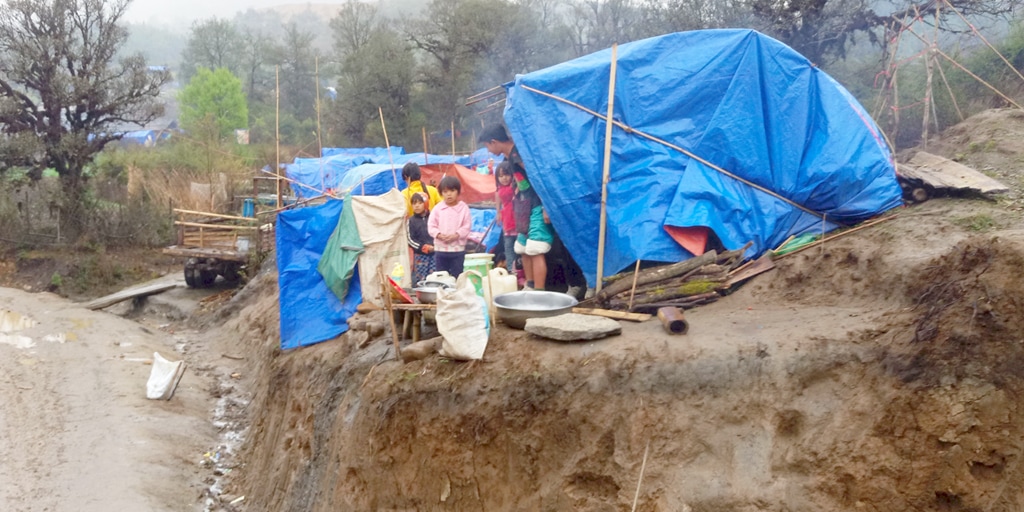|
Since June 2011 the Myanmar (Burma) central government has been in open conflict with the Kachin Independence Army following a failure in peace talks to resolve their longstanding conflict. While this conflict dates back decades, the past six years have seen consistent fighting, displacing more than 120,000 people across Northern Myanmar. In 2012 we heard first-hand accounts of those fleeing the conflict, who spoke of brutal violence, ongoing atrocities and severe violations of human rights including the wide-spread burning of villages, rape, maiming and executions. Now the government appears determined to crush this last remaining pocket of wide-spread armed resistance in Myanmar and their tactics have been increasingly harsh. In October, with significant natural resources and political influence at stake, they began to use jets, helicopters and shelling to attack civilians in the camps where we work. Zai Awng was one of the camps hit the hardest, with 3,000 displaced Kachin people living up in the mountains on the China border, taking refuge there since 2012. The October air attacks drove them out of the camp and over the border into China where they were badly beaten by authorities. Forced to turn back to Myanmar, they hid in the jungle until the troops withdrew. They returned to Zai Awng but in November the shelling resumed and they had no option but to flee again, hiding in a different part in China, then taking a different route back over the border. Any people who attempted within that month to return to the old camp disappeared, so the 2,000 people that remained built a new camp, closer to Laiza, called Sha It Yang. The terrified community are hoping this location could be safer, but are traumatised by their experience and livng with the knowledge that if they are attacked again, there is nowhere to run to. The conditions here are appalling, with thousands of people living under tarpaulin and only one road in or out. Food supplies are scant and the water is unsanitary, especially after rain, which saturates the area causing many problems. Three teachers from our Centre in the original camp have remained with the community and worked to re-build a safe space for children. They have set up two classes but there is need for another four. Children are in desperate need of support after what they have been through, with teachers reporting that the even Chinese New Year firecrackers heard across the border are now terrifying for them. One teacher said, “We are doing the best we can, but naturally the children are quieter, less active and less able to be engaged and creative. The wider community is so tired of the fighting, they just want to go home, and they don’t understand why the world isn’t paying attention”. In the northern camps of Kachin state there is not a single other international organisation offering ongoing support to children. As the area remains an active war zone, access to the camps is difficult. Aid agencies sporadically operate in the central government controlled regions of Kachin State, but leave when the operating environment becomes too difficult. We are appealing for financial support to both maintain and expand the work here, to meet the escalating need. Please share about this situation where you can, to direct attention to a beleaguered and terrified group of civilians, who are in need of critical help yet currently forgotten by the international community. Support usComments are closed.
|
RECEIVE OUR EMAILSBlog Categories
All
Archives
July 2024
|
|
JOIN US ON SOCIAL MEDIA
|
Annual Report | Contact Us | Jobs | Media Centre | Resources | Shop
Accessibility & Policies: Accessibility | Equity, Diversity & Inclusion Policy | Complaints| Privacy Policy | Safeguarding
Accessibility & Policies: Accessibility | Equity, Diversity & Inclusion Policy | Complaints| Privacy Policy | Safeguarding
Children on the Edge, 5 The Victoria, 25 St Pancras, Chichester, West Sussex, PO19 7LT, UK | 01243 538530 | [email protected]



 Give monthly
Give monthly Fundraise for us
Fundraise for us RSS Feed
RSS Feed
